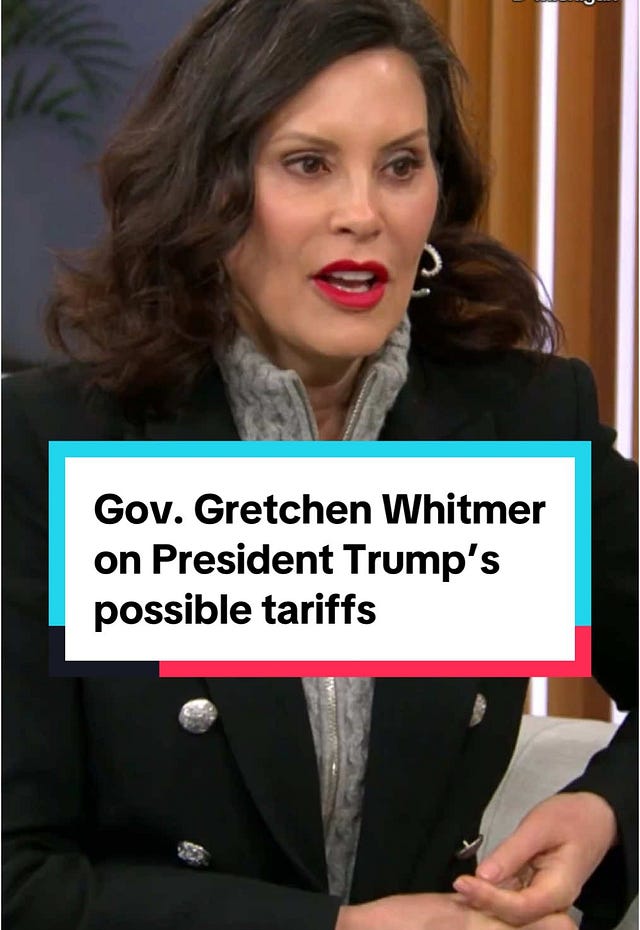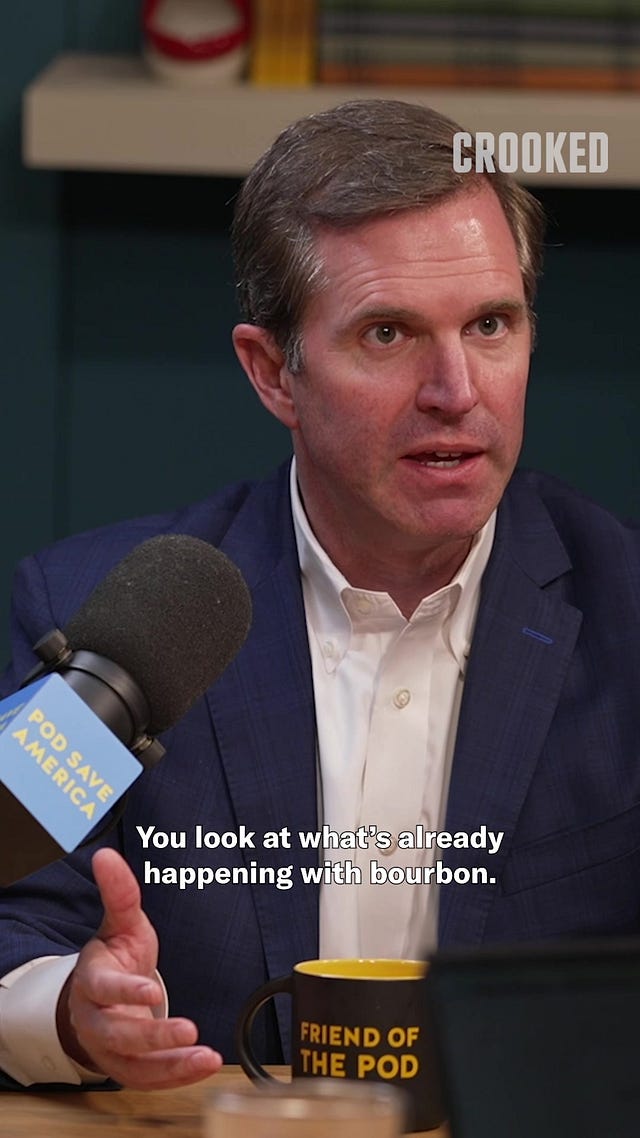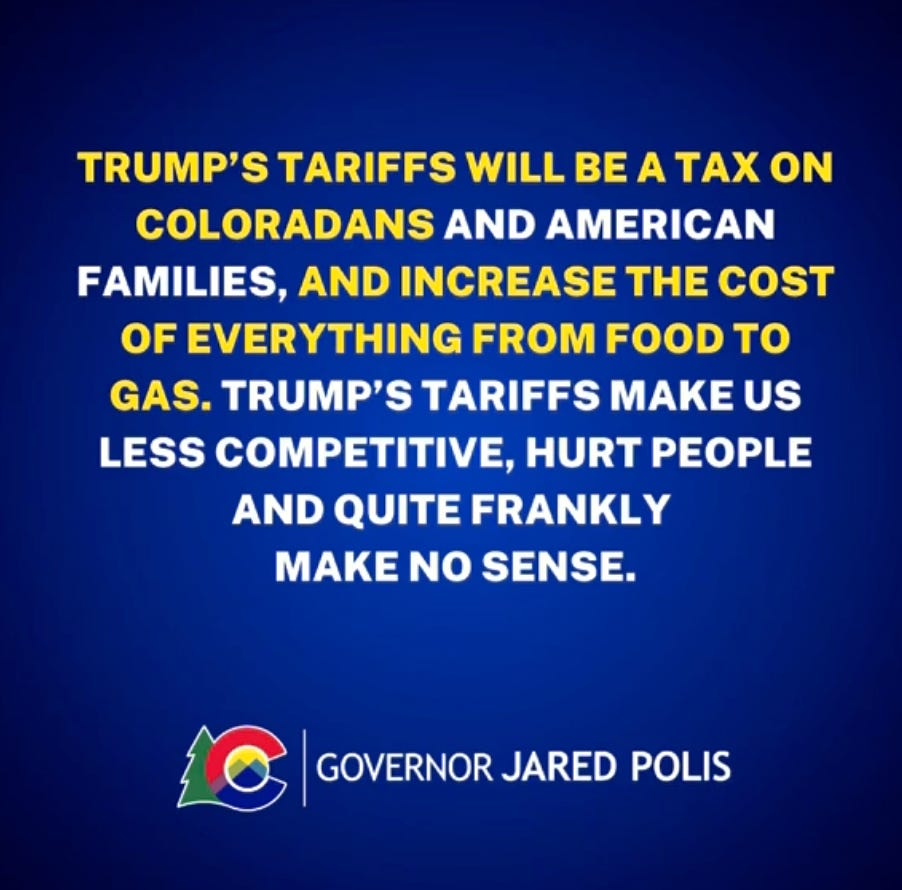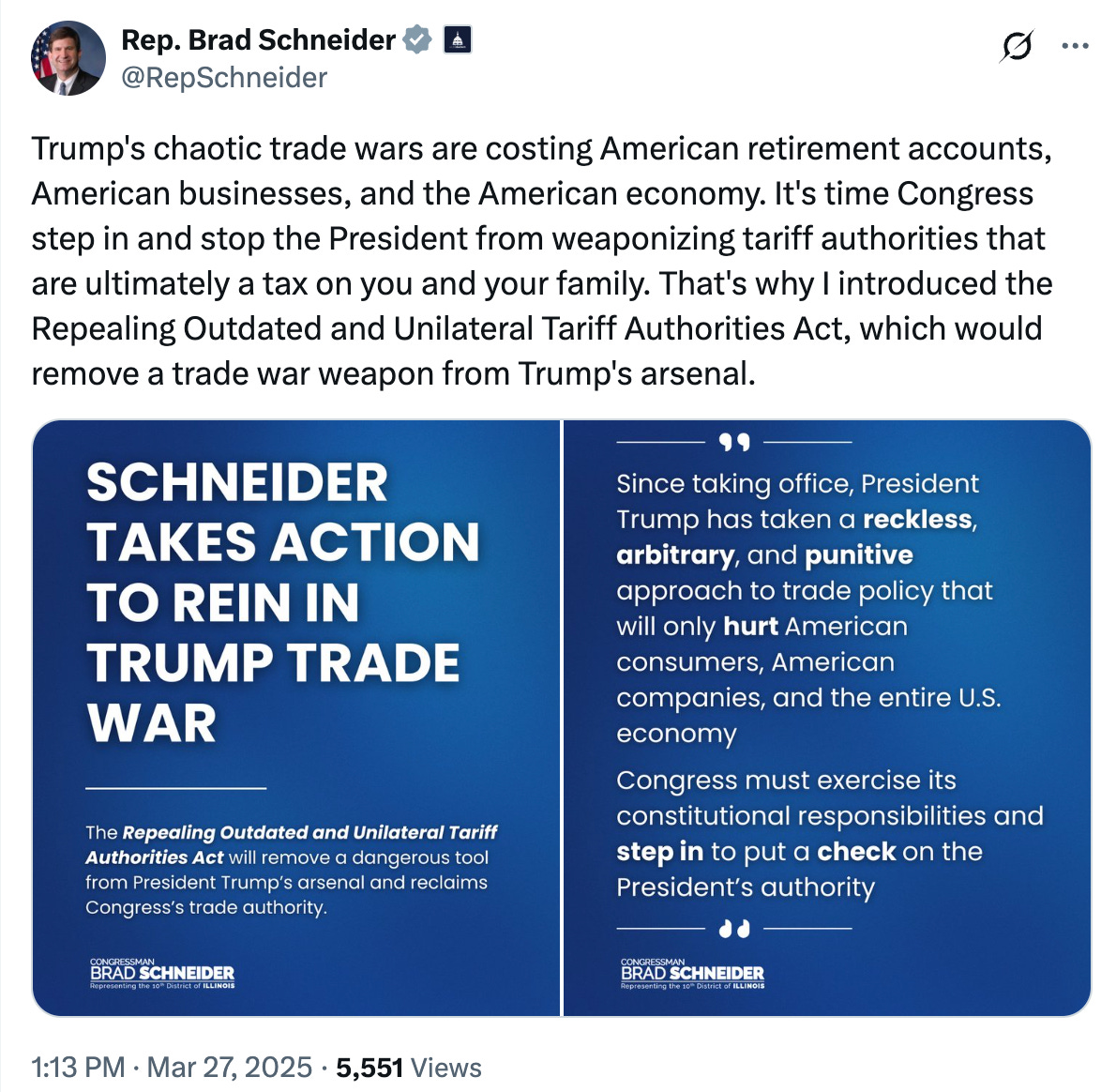Democrats need to embrace "combative centrism"— the strategy of fighting harder against Trump's policies while maintaining centrist economic positions that appeal to swing voters. With April 2nd approaching—what President Trump has dubbed "Liberation Day" for his massive new tariff implementation (details remain unclear), Democratic lawmakers are using the tariff battle as a testing ground. This is an opportunity for more assertive economic messaging. Aggressively challenging these harmful tariffs represents combative centrism at its most effective. It involves directly confronting Trump's economic policies while championing pragmatic solutions that resonate with working-class voters.
As Democrats continue searching for their footing in the post-2024 landscape, the fight against Trump's tariffs offers a perfect case study in how they can reclaim the economic narrative that resonates with voters who care most about cost-of-living issues.
The Messaging Winners: Democrats Who Make Tariffs Personal
In the weeks since Trump announced his "Liberation Day" tariffs, certain Democrats have distinguished themselves by making abstract trade policy feel personal. These messaging standouts have found ways to translate complex economic policy into direct kitchen-table impacts.
Governor Gretchen Whitmer of Michigan has emerged as a particularly effective voice, drawing explicit connections between tariffs and everyday costs. She warned that tariffs would lead to higher prices on fruit, construction materials, and cars for American consumers. Her focus on construction materials specifically highlights how tariffs impact housing affordability at a time when building costs are already straining budgets.

 Tiktok failed to load.
Tiktok failed to load.Enable 3rd party cookies or use another browser
Kentucky Governor Andy Beshear took his case directly to Pod Save America, where he detailed how tariffs would disproportionately harm Kentucky's signature bourbon industry alongside its growing auto manufacturing sector. By localizing the impact to his state's most recognizable products, Beshear made the tariff impact tangible rather than theoretical.
Colorado Governor Jared Polis has deployed a distinctly digital-native approach to the tariff fight. His office released a shareable blue-and-gold graphic declaring: "Trump's tariffs will be a tax on Coloradans and American families, and increase the cost of everything from food to gas." The infographic, paired with trending music on TikTok, demonstrates how Democrats can package economic messaging for maximum reach in the attention economy. His conclusion that tariffs "make no sense" is the kind of plainspoken language that connects with everyday voters.
What's particularly notable about the current tariff fight is how it has mobilized Democrats at all levels of government, not just federal officials. State and local politicians – often closer to the economic pain points in their communities – have offered some of the most effective messaging.
Michigan State Senator Sarah Anthony has been especially blunt about how tariffs would cascade through the economy: "Supply chains are going to be impacted," she warned in an interview with Politico. "I feel as though the Trump administration never thinks about the short- and long-term impacts. They just think about the next press hit, the next thing that makes them look like a renegade." Her experience highlights how tariffs would hurt not just Michigan's auto industry, but ripple through the entire economic ecosystem.
Taking Action, Not Just Talking
Some Democrats have even gone beyond just messaging, proposing a counter bill to limit the trade war that Trump has already started. This framing brilliantly connects abstract trade policy directly the impact on your family culminating in Congressman Brad Schneider’s introduction of the Repealing Outdated and Unilateral Tariff Authorities Act to "remove a trade war weapon from Trump's arsenal."
The Power of Controlled Outrage
This is why I argue that the best economic messaging sounds...mad. Not hysterical, not performative. Just mad on your behalf. Mad that your paycheck doesn’t stretch. Mad that your groceries cost more because a policy designed to punish Ottawa ends up taxing Bloomington. Mad that your family’s cost of living got caught in the crossfire of a chaotic trade war that didn’t punish our adversaries so much as it bruised our own middle class.
We talk about volatility in trade policy like it’s a Wall Street issue. But it is more than that. It’s a day-to-day cost of living issue. It’s what happens when a president slaps 25% tariffs on steel from Toronto and acts like that’s standing up to China. Tariffs that hit Canada — our neighbor, our ally — and sent shockwaves through small manufacturers in Michigan and Ohio. When even Windsor, Ontario — a city deeply tied to the U.S. auto economy — became collateral damage in a fight it had nothing to do with, that should’ve been a national scandal. Instead, it was just another headline.
That tone — controlled outrage anchored in economic reality — is what Democrats need to bring back. It is the connective tissue between policy literacy and emotional resonance. You cannot awareness-campaign your way into the hearts of swing voters. You have to fight for their bills. Their rent. Their bag of groceries.
Learning From Past Mistakes
This is not the first time Democrats have had a challenge similar to this. During the Biden Administration, Biden prioritized jobs through large non targeted spending packages, which worsened inflation and increased the price of goods. He assumed voters would reward him down the line, but that was not the case, and Democrats paid a heavy political price. Policy proposals that prioritize abstract future benefits over immediate economic pain have consistently backfired politically.
As Kelsey Piper of Vox has noted:
“People are not willing to suffer for your ideology. The fatal flaw of left-wing degrowthism, I've written, is its disinterest in political realities. People care about owning a washing machine; they care about owning air conditioning. In the developing world, people buy these things as soon as they are within reach. People also care about the environment, but if you put their concern for the environment at odds with their ability to have material goods, their preference for material goods will win.”
Beyond Price Increases: The Innovation Cost
As Democrats continue wondering about the best path forward to combat tariffs, they must understand how protectionism impacts our ability to operate and innovate at the economic level. We're not only increasing prices but actively hampering our growth potential.
It's important to recognize that the trade war is still in its early stages, and Democrats need to better communicate these intuitive economic impacts to their voters. Odd Lots illustrated this point effectively in their newsletter, by focusing solely on making “kitchen mitts or microwaves” domestically; we sacrifice scale economies, diverse innovation, complex supply chain development, and adaptable workforce skills. Ultimately, limiting economic complexity and prosperity while remaining vulnerable to market shifts.
When countries become rich, it's because they've mastered building the most complex things the market demands.
Democrats must make this case forcefully: tariffs don't just make goods more expensive; they make our entire economy less capable of innovation and complexity. This is a prosperity-killing policy that sacrifices long-term economic development for short-term political theater.
Combative Centrism in Action: Fighting Back Without Moving Left
The Democratic response to tariffs exemplifies "combative centrism" at its best. They're:
Being combative: Democrats aren't mincing words, directly calling out Trump's policies as harmful and contradictory to his promises to lower costs.
Staying pragmatic: They're appealing to middle-class economic interests and business stability rather than making ideological arguments.
Taking action: Democrats aren't just talking – they're introducing real legislation.
Rep. Brad Schneider, with Ways & Means colleagues including Don Beyer, introduced the Repealing Outdated and Unilateral Tariff Authorities Act to repeal Section 338 of the Tariff Act of 1930. This legislation aims to prevent President Trump from using this authority to unilaterally impose up to 50% tariffs on April 2, 2025, without congressional consultation.
Speaking plainly: By consistently framing tariffs as a "tax on American families," Democrats are cutting through policy complexity with kitchen-table language.
Highlighting contradiction: They're exposing the gap between Trump's promise to reduce costs and policies that economists across the spectrum say will increase them
The Cost-of-Living Focus That Wins
The cost-of-living crisis isn't just an economic issue—it's an electoral one. Voters may not grasp the intricacies of Section 301 or 232 of the Trade Expansion Act, but they acutely feel the pinch when everyday essentials become more expensive. Democrats who have found a way to make tariffs personal by connecting them directly to household budgets are showing the way forward.
When tomorrow comes, the Democrats who are holding the line—staying focused on cost-of-living impacts while fighting back against harmful policies—are providing a roadmap for their colleagues at all levels. By hammering home this message consistently across all platforms, Democrats can gradually reclaim the economic narrative and position themselves as the true champions of American prosperity.








I liked the article and agree with most of it. However, I think is a bit that's off-base in regards to learning from past mistakes.
You say, " Biden prioritized jobs through large non targeted spending packages, which worsened inflation and increased the price of goods. He assumed voters would reward him down the line, but that was not the case, and Democrats paid a heavy political price. Policy proposals that prioritize abstract future benefits over immediate economic pain have consistently backfired politically."
I read that as being his Covid recovery spending which actually WAS in response to immediate economic pain! It is now known (or at least knowable as some still deny it) that his Covid spending was too much and did worsen inflation more than was needed. But the impetus was immediate, not long term or abstract.
And the underlying theory is correct. The response to a demand driven downturn IS to run the economy hotter in one or several of a variety of ways.